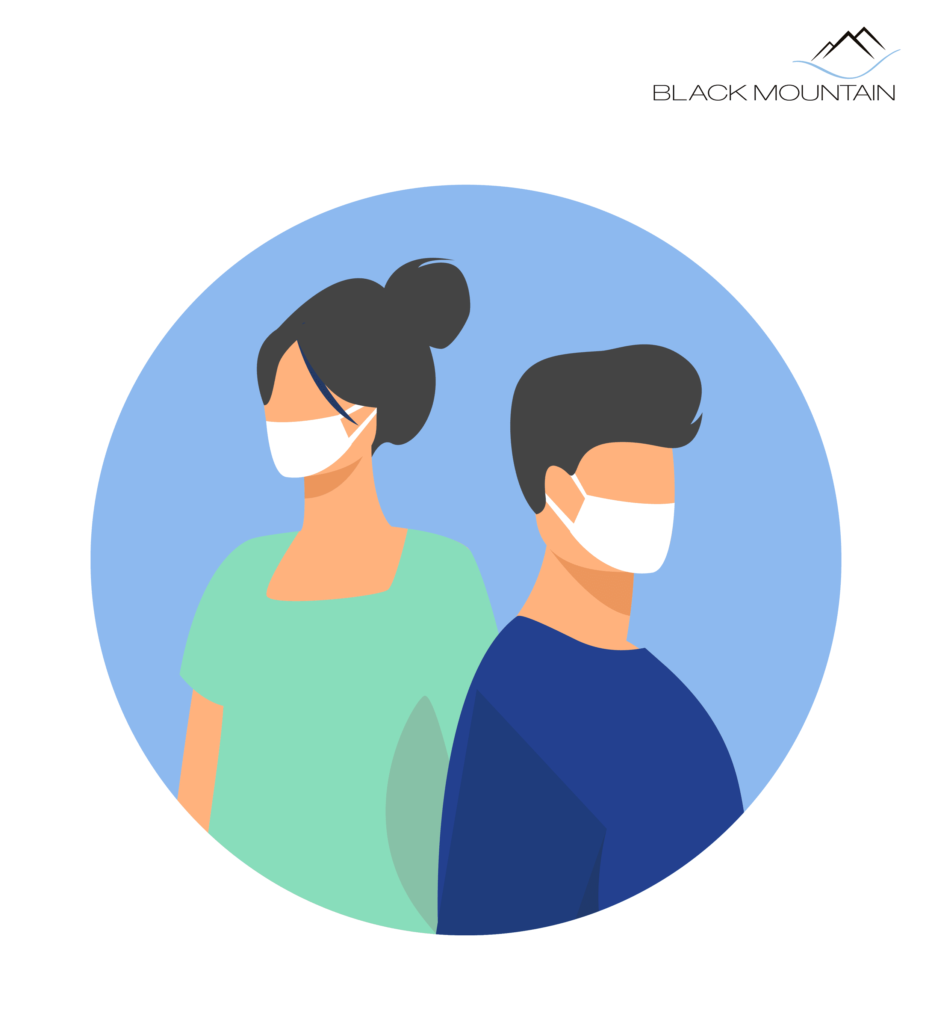Late afternoon on the 1 April, the Government updated its guidance on Covid-19 and how we are to live and work safely. Not only do these changes coincide with the end of the free LFT and PCR tests, Covid-19 is now to be classed the same as other “respiratory infections”.
Source: UK Health Security Agency
Guidance on ‘Living safely with respiratory infections, including Covid-19’
The UK Health Security Agency has published guidance entitled Living safely with respiratory infections, including Covid-19, which provides basic advice for the public on actions to take to help reduce the risk of catching and passing on Covid-19 and other respiratory infections. This guidance focuses on four key areas:
- Getting vaccinated against Covid-19, including taking up the offer of any booster jabs for which people are eligible;
- Ensuring that indoor spaces are well ventilated to reduce the amount of respiratory virus in the air;
- Practicing good hygiene, such as covering your nose and mouth when you cough or sneeze, washing your hands and cleaning surfaces regularly; and
- Wearing a face covering in certain higher risk situations, such as when visiting someone who is vulnerable, or when you will be in close contact with lots of other people.
Guidance for ‘People with symptoms of a respiratory infection including Covid-19
The other key piece of guidance published by the UK Health Security Agency is directed at people with symptoms of a respiratory infection including Covid-19. It replaces previous guidance on self-isolation and recommends that:
- Adults who have symptoms of a respiratory infection, who have not taken a Covid-19 test, but who have a high temperature or do not feel well enough to go to work or carry out normal activities, should try to stay at home and avoid contact with other people until they no longer have a high temperature (if they had one) or until they no longer feel unwell.
- Adults who have taken a Covid-19 test and received a positive result should try to stay at home and avoid contact with other people for 5 days after the day they took their test, even if they do not have any symptoms.
- In both of the above scenarios, people are advised to work from home if they can, and to talk to their employer about options available to them if they cannot work from home.
- Children who have mild symptoms of a respiratory infection, such as a runny nose, sore throat, or slight cough, but are otherwise well, can continue to attend school.
- Children who are unwell and have a high temperature should stay at home and avoid contact with other people where they can. They can return to school when they no longer have a high temperature and are well enough to attend.
- Children should not be tested for Covid-19 unless this is recommended by a health professional. If a child has a positive Covid-19 test, they should try to stay at home and avoid contact with other people for 3 days after the day they took the test, if they can.
The Living with Covid Plan also indicated that, from 1 April, employers would no longer be subject to any specific requirement explicitly to consider Covid-19 in their health and safety risk assessments. That said, employers are still under a general obligation in health and safety law to take all reasonably practicable steps to provide a safe working environment.
Removal of free Covid-19 testing
Free LFD tests are no longer generally available to the public, although they continue to be available to individuals in certain high risk settings, such as patient-facing NHS staff, care home workers, etc. People who are not eligible for free LFD tests can purchase them from pharmacies.
Free PCR tests that were previously available to anyone with symptoms have also been removed for most people.
Reducing the spread of respiratory infections, including COVID-19, in the workplace
Public health principles for reducing the spread of respiratory infections, including COVID-19, in the workplace.
As we learn to live safely with coronavirus (COVID-19), there are actions we can all take to help reduce the risk of catching COVID-19 and passing it on to others. These actions will also help to reduce the spread of other respiratory infection, such as flu, which can spread easily and may cause serious illness in some people.
Employers
This information will help you to understand how to reduce the spread of respiratory infections such as COVID-19 and flu in the workplace. This is especially important if there are people in the workplace whose immune system means they are at higher risk of serious illness from COVID-19.
While there is no longer a requirement for all employers to explicitly consider COVID-19 in their statutory health and safety risk assessments, it is important that as a business, organisation or an employer you continue to comply with your legal obligations relating to health and safety, employment and equality duties.
Know which symptoms to look out for
Respiratory infections can spread easily between people. It is important for staff and employers to be aware of symptoms so they can take actions to reduce the risk of spreading the infection to other people.
The symptoms of COVID-19 and other respiratory infections are very similar so it is not possible to tell if you have COVID-19, flu or another infection based on symptoms alone. Most people with COVID-19 will have a relatively mild illness, especially if they have been vaccinated.
Symptoms of COVID-19, flu and common respiratory infections include: • Continuous cough
• High temperature, fever or chills
• Loss of, or change in, your normal sense of taste or smell
• Shortness of breath
• Unexplained tiredness, lack of energy
• Muscle aches or pains that are not due to exercise
• Not wanting to eat or not feeling hungry
• Headache that is unusual or longer lasting than usual • Sore throat, stuffy or runny nose
• Diarrhoea, feeling sick or being sick
Some people may continue to have a cough or feel tired after other symptoms have improved, but this does not mean that they are still infectious. You can find information about these symptoms on the NHS website.
What to do if a member of staff has symptoms of a respiratory infection, including COVID-19
If a member of staff is unwell with symptoms of a respiratory infection, such as COVID-19, they should follow the guidance for people with symptoms of a respiratory infection such as COVID-19. (click this link and print off for your employees).
Employers, in accordance with their legal obligations, may wish to consider how best to support and enable their workforce to follow this guidance as far as possible.
Actions to reduce the spread of respiratory infections, including COVID-19
Encourage and enable vaccination
Vaccinations are very effective at preventing serious illness from COVID-19, flu and other diseases. Employers, in accordance with their existing legal obligations, may wish to consider how best to support and enable staff who wish to be vaccinated to get their vaccines when offered them. There is a COVID-19 vaccination guide for employers which contains information on actions employers can take to enable staff vaccination. There is also guidance available on the vaccines that are available through the NHS.
Let fresh air in
Bringing in fresh air to occupied spaces can help to reduce the concentration of respiratory particles, lowering the risk of airborne transmission of respiratory viruses.
The risk of catching or passing on COVID-19 and other respiratory infections can be higher in certain places and when doing certain activities. When someone with an infection breathes, speaks, coughs or sneezes, they release respiratory particles which can contain the virus. These particles can come into contact with the eyes, nose or mouth or can be breathed in by another person. These virus-containing particles can also land on surfaces and the virus can be passed from person to person via touch. In general, the risk of catching or passing on a respiratory infection is highest when in close contact with someone who is infected.
It is also possible to pass on a respiratory infection between people who do not have close contact, especially if they are in a crowded and/or poorly ventilated space where smaller virus particles can stay suspended in the air for some time and where there are more people who might be infectious. The risk of airborne transmission is increased when occupants in a space are participating in energetic activity, such as exercising, shouting, singing or talking loudly.
The Health and Safety Executive provides guidance on how to assess and improve ventilation in line with health and safety requirements under Workplace (Health, Safety and Welfare) Regulations 1992. Detailed COVID-19 specific guidance for workplaces and public buildings is provided by the Chartered Institution of Building Services Engineers (CIBSE) for those who wish to put additional measures in place.
Maintain a clean workplace
Keeping workplaces clean reduces the risk of infection and can reduce sickness in a workforce. It’s especially important to clean surfaces that people touch a lot.
Staff can be supported to maintain a clean working environment by providing them with cleaning products, soap and hot water, and/or sanitiser.
Outbreaks in the workplace
There is no requirement to report workplace outbreaks of respiratory infections to your local public health team. However, if you experience high levels of people with respiratory symptoms in your workplace the actions detailed above here will help to reduce the spread, so they should be promoted and applied more rigorously.
Management of members of staff who are at risk of serious illness from COVID-19
Some workers are at a greater risk of serious illness from COVID-19, for example people who have a weakened immune system.
There is specific guidance for people whose immune system means that they are at higher risk, because they have a reduced ability to fight infections, such as COVID-19. Employers may wish to consider the needs of employees at greater risk from COVID-19, including those whose immune system means they are at higher risk of serious illness from COVID-19.
Risk assessment
The requirement for every employer to explicitly consider COVID-19 in their health and safety risk assessment has been removed. Employers may choose to continue to cover COVID-19 in their risk assessments. Employers that specifically work with COVID-19, such as laboratories, must continue to undertake a risk assessment that considers COVID-19.
Employers should continue to comply with the requirements for cleaning, ventilation and welfare facilities in the Workplace (Health, Safety and Welfare) Regulations 1992 or the Construction Design and Management Regulations 2015 to control occupational health and safety risks.
Employers have a duty to consult with their employees, or their representatives, on health and safety matters. The Health and Safety Executive has guidance on how to keep people safe and healthy at work.
The HR team are available to assist with any questions that you may have, or situations that may occur based on this latest guidance.





